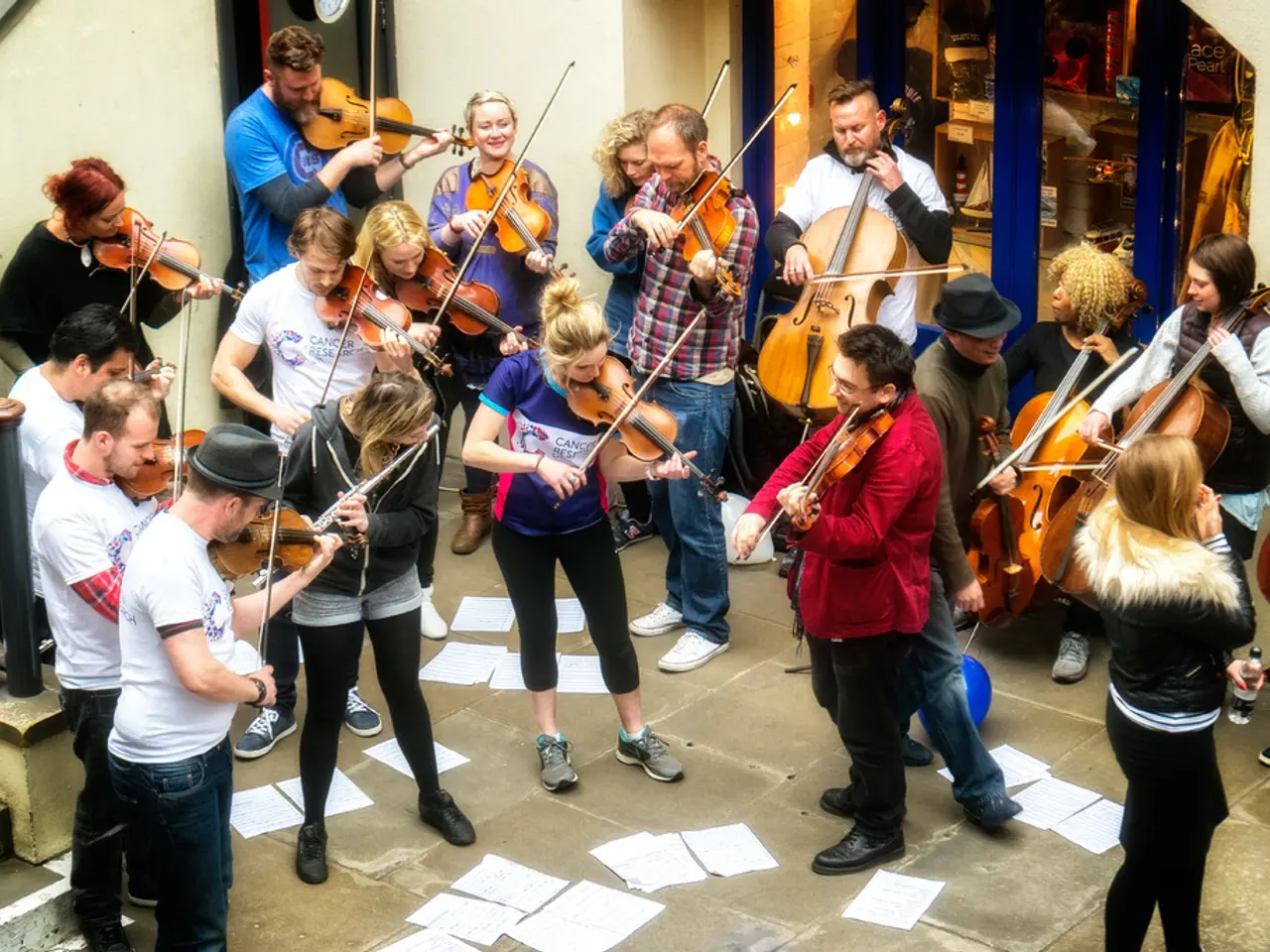Considering Tomorrow: Gazing Toward the Next Horizon
In the heart of Leipzig, the Gewandhaus Orchestra, under the skilled baton of Andris Nelsons, performed Dmitri Shostakovich's powerful 11th Symphony, titled "The Year 1905." This symphony, a poignant musical protest and reflection on Russian history, was initially withdrawn by the composer due to fear of causing a scandal and potential danger.
Composed in 1957, the symphony serves as a musical reflection and protest against the tragic events of the 1905 Russian Revolution, particularly the Bloody Sunday massacre. It vividly evokes the atmosphere of that peaceful protest, symbolizing the betrayal of the people and the dawn of revolutionary change.
The symphony's opening movement, "Square before the Palace," features tens of thousands of people standing up for their rights against tyranny. The muted pianissimo sounds of strings, fifths and octaves, supported by harps, create a sense of quiet tension and distant trumpet calls, setting an emotional and dramatic tone.
The second movement portrays the demonstration rising until the Tsar's soldiers shoot at the defenseless people. The symphony then transitions into a furious string fugue, fanfares, and violent percussion attacks, representing the tumultuous clash of the people and the authorities.
The third movement, "In Memoriam," is a funeral march in which Shostakovich incorporates the workers' song "Immortal Victims." This movement is followed by a grotesque section with six flutes playing shrill, ear-piercing tones, creating a sense of disarray and despair.
The symphony's final movement is a furious storm of sound, representing a glimpse into the future and a stubborn hope for political change. The symphony ends with an endless, fading chord, soft drumbeats, and the skeleton of a melody, leaving the outcome open.
The symphony's ending was described by Ann-Katrin Zimmermann as a "wordless proclamation pathos" in the Leipzig program booklet. It can also be heard as a beacon against oppression and violence against the defenseless.
Leipzig's expertise in Shostakovich's music was showcased during the performance, a city that has a long history with the composer, dating back to the worldwide first cyclic performance of all Shostakovich symphonies under Kurt Masur from 1976 to 1978.
The symphony, Op. 103, commemorates the Bloody Sunday of January 9, 1905, a day of demonstrations for humane working conditions, agrarian reforms, the abolition of censorship, and the creation of a popular representation. It resonates with themes of loss, suppression, and the longing for justice, reflecting Shostakovich’s complex relationship with the regime and his subtle critiques of totalitarianism.
In the context of Shostakovich’s life, this symphony was created after a period of intense political repression (1930s-1950s) in which he faced attacks on his music and was forced to navigate between official Soviet expectations and his personal artistic expression. The 11th stands out as a work that, while publicly commemorating revolutionary history aligned with Soviet ideology, also carries a deeper meaning that resonates with modern audiences.
The symphony also features notable elements such as a mighty tam-tam wall and a lamenting bassoon melody. The celesta and a final C minor are featured in the symphony's ending.
As part of the Shostakovich Festival in Leipzig, the Boston Symphony Orchestra under Andris Nelsons also performed the symphony, marking a significant moment in the city's cultural history.
Meanwhile, Bernhard Heisig, a renowned artist, had a special exhibition, "Birthday still life with Icarus," at the Leipzig Museum of Fine Arts in the spring, featuring nightmare paintings and anti-war lithography maps. His work, like Shostakovich's, serves as a powerful commentary on the human condition and the struggles faced by society.
In summary, Shostakovich’s 11th Symphony is historically anchored in the 1905 Revolution events and holds enduring significance as a poignant musical protest and reflection on Russian history, social injustice, and the hopes for an ideal society under oppressive conditions.
The 11th Symphony by Dmitri Shostakovich, performed by the Gewandhaus Orchestra in Leipzig, serves as a reflection on the tragic events of the 1905 Russian Revolution and a commentary on social injustice, commemorating the Bloody Sunday massacre. As part of the symphony's powerful message, general-news themes, music, and politics overlap, making it a wordless proclamation against oppression and violence against the defenseless. Meanwhile, the exhibition "Birthday still life with Icarus" by Bernhard Heisig, held at the Leipzig Museum of Fine Arts, parallels Shostakovich's symphony as a strong commentary on the human condition and struggles faced by society.






